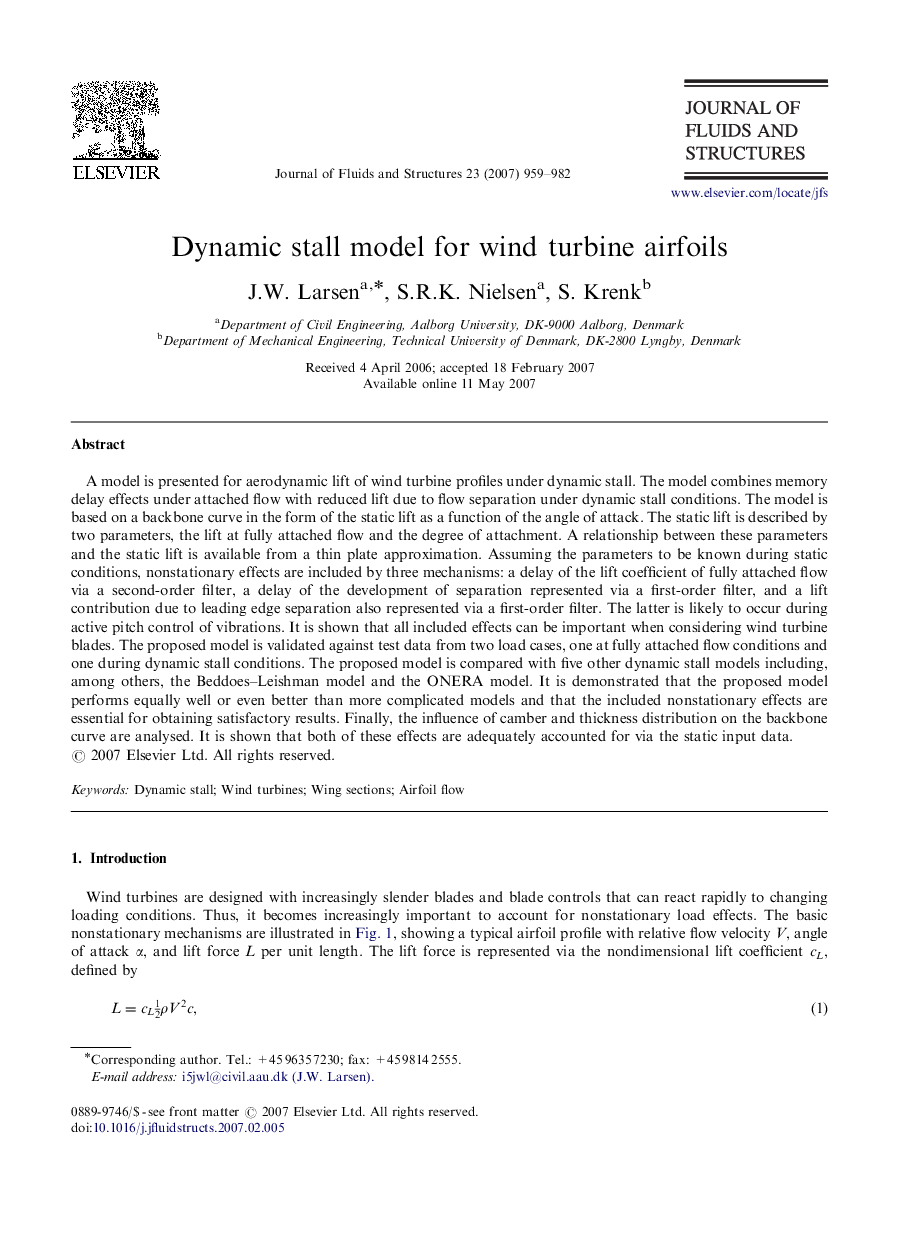| Article ID | Journal | Published Year | Pages | File Type |
|---|---|---|---|---|
| 794548 | Journal of Fluids and Structures | 2007 | 24 Pages |
A model is presented for aerodynamic lift of wind turbine profiles under dynamic stall. The model combines memory delay effects under attached flow with reduced lift due to flow separation under dynamic stall conditions. The model is based on a backbone curve in the form of the static lift as a function of the angle of attack. The static lift is described by two parameters, the lift at fully attached flow and the degree of attachment. A relationship between these parameters and the static lift is available from a thin plate approximation. Assuming the parameters to be known during static conditions, nonstationary effects are included by three mechanisms: a delay of the lift coefficient of fully attached flow via a second-order filter, a delay of the development of separation represented via a first-order filter, and a lift contribution due to leading edge separation also represented via a first-order filter. The latter is likely to occur during active pitch control of vibrations. It is shown that all included effects can be important when considering wind turbine blades. The proposed model is validated against test data from two load cases, one at fully attached flow conditions and one during dynamic stall conditions. The proposed model is compared with five other dynamic stall models including, among others, the Beddoes–Leishman model and the ONERA model. It is demonstrated that the proposed model performs equally well or even better than more complicated models and that the included nonstationary effects are essential for obtaining satisfactory results. Finally, the influence of camber and thickness distribution on the backbone curve are analysed. It is shown that both of these effects are adequately accounted for via the static input data.
